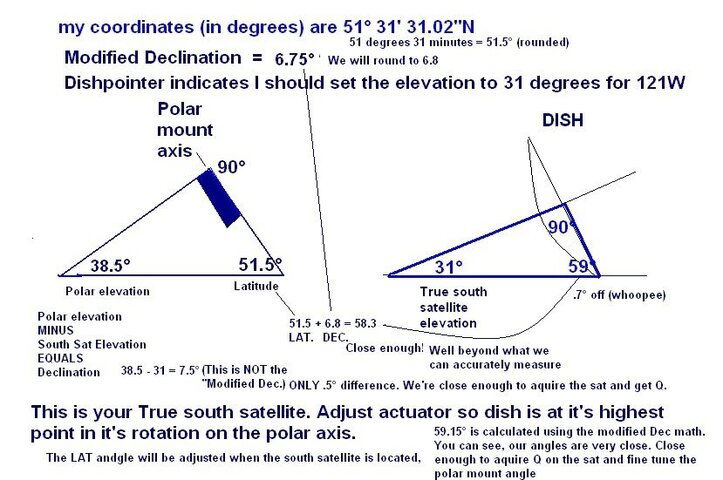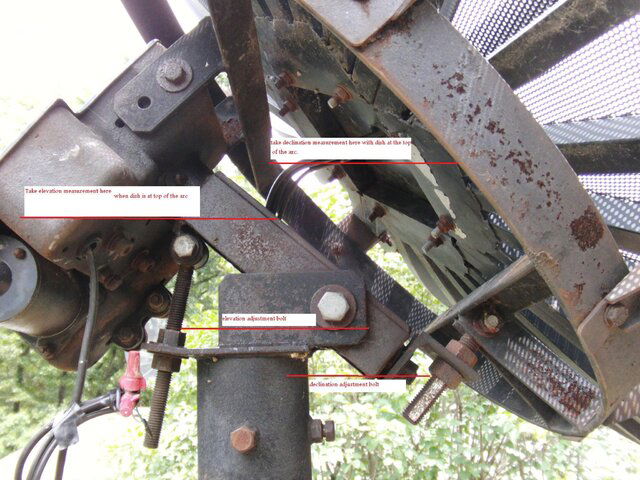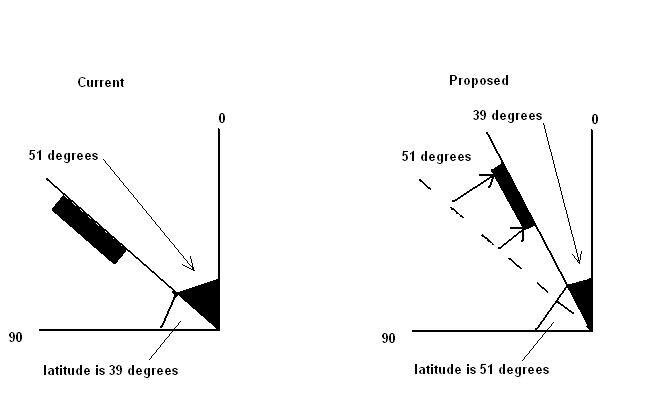Well I have tried all of your suggestions - still no luck. I get 45% signal intensity and 10% signal quality consistently.
1. Elevation/declination: I have a magetic protractor to verify elevation and declination - both are correct. I verified that the polar mount is at 51 degrees and the declination adds another 7 degrees.
2. I have measured from 3 points on the dish to the scaler ring to ensure it is centered.
3. I have adjusted focal lenth to 44 inches and f/d to 36
4. I adjusted the dish to true south and then moved the base to try and get 121W
5. Pole is plumb
6. Dish is not warped (but might be soon if I can't get this to work!)
I am very frustrated that I cannot get any improvement. I installed the new DMX741 and connected the satellite finder - no change at all. The only guesswork if finding the sat's and I have painstakingly moved cm by cm from true south to try and get 121W or 123W. Is it my dish? Is it the openbox S9? I am going through antenna setup on the S9 to see the tp intensity and quality - is this correct? Any other suggestions?
1. Elevation/declination: I have a magetic protractor to verify elevation and declination - both are correct. I verified that the polar mount is at 51 degrees and the declination adds another 7 degrees.
2. I have measured from 3 points on the dish to the scaler ring to ensure it is centered.
3. I have adjusted focal lenth to 44 inches and f/d to 36
4. I adjusted the dish to true south and then moved the base to try and get 121W
5. Pole is plumb
6. Dish is not warped (but might be soon if I can't get this to work!)
I am very frustrated that I cannot get any improvement. I installed the new DMX741 and connected the satellite finder - no change at all. The only guesswork if finding the sat's and I have painstakingly moved cm by cm from true south to try and get 121W or 123W. Is it my dish? Is it the openbox S9? I am going through antenna setup on the S9 to see the tp intensity and quality - is this correct? Any other suggestions?





